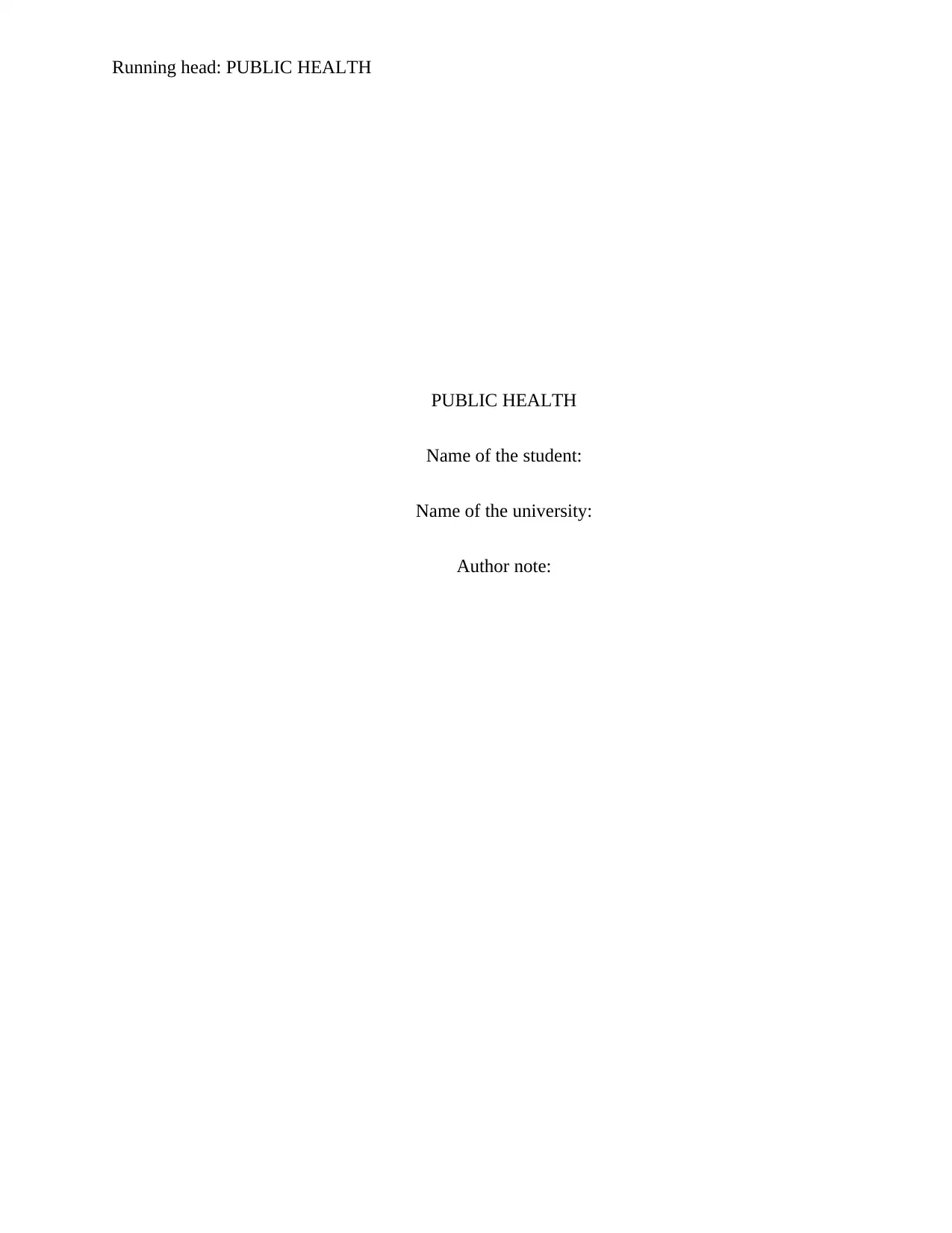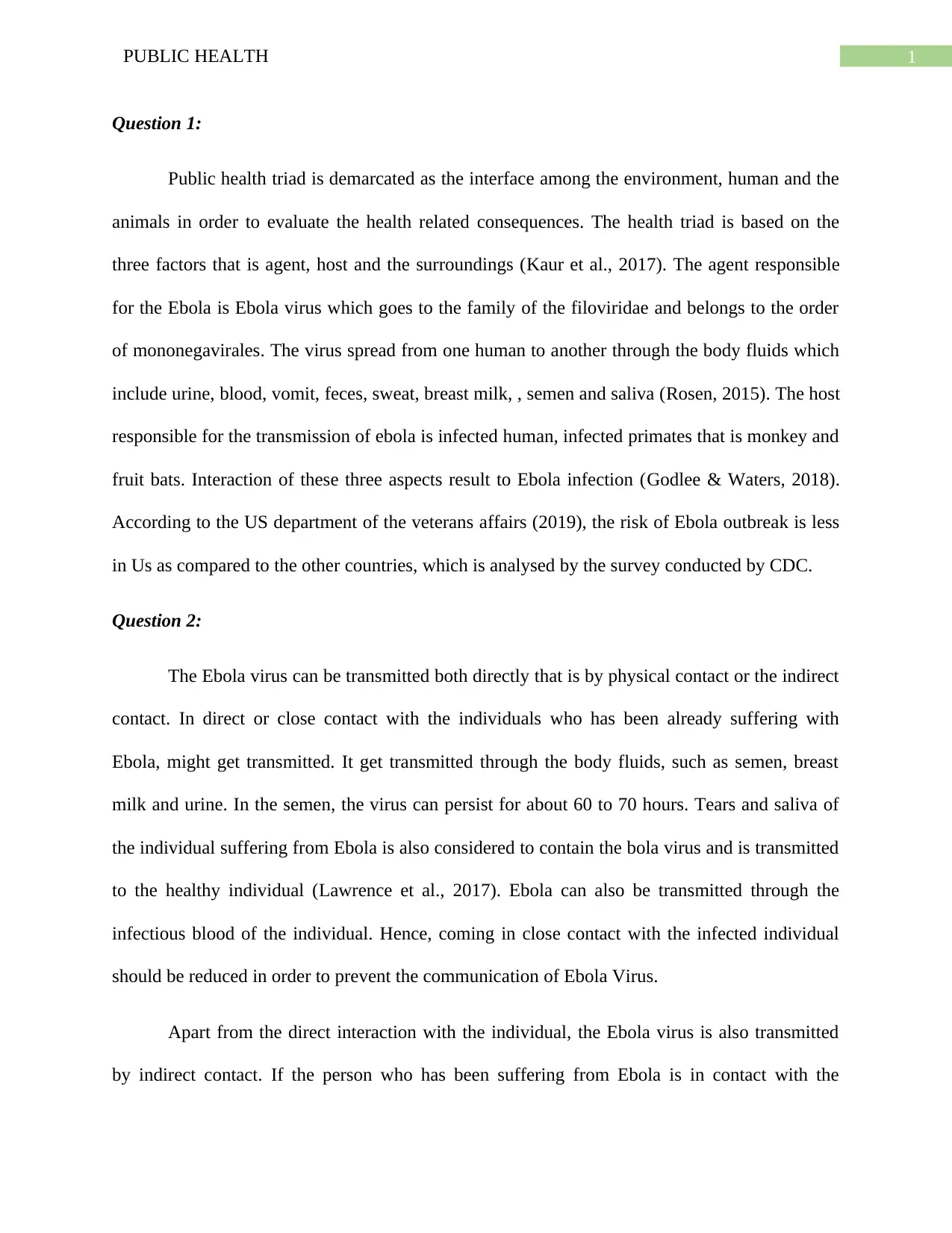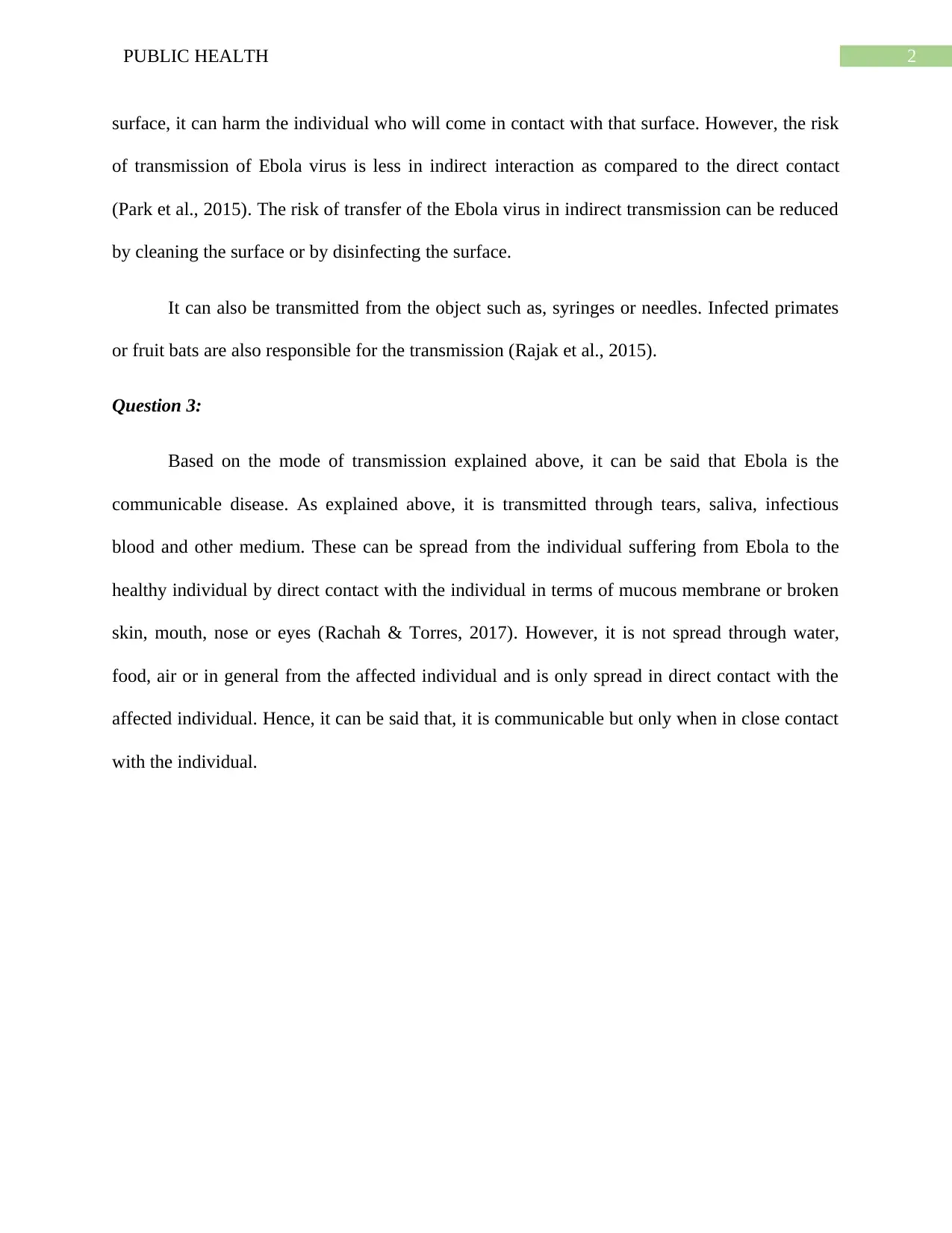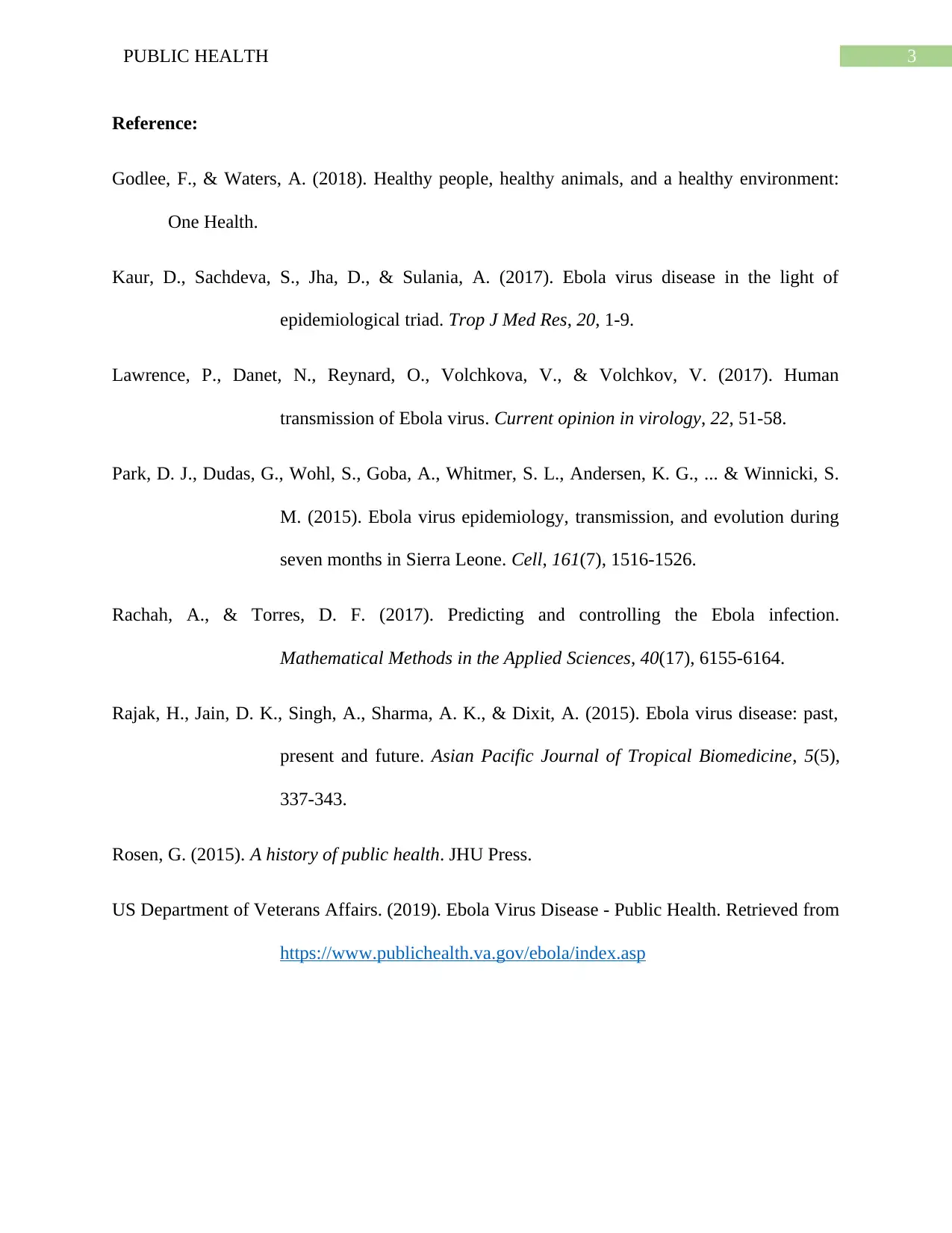Public Health Assignment: Ebola Virus Disease Analysis
VerifiedAdded on 2022/11/18
|4
|921
|169
Homework Assignment
AI Summary
This assignment delves into the public health aspects of the Ebola virus, examining its transmission dynamics through the lens of the epidemiological triad: agent, host, and environment. It identifies the Ebola virus as the agent, transmitted via bodily fluids from infected humans, primates, and fruit bats. The solution differentiates between direct and indirect transmission routes, emphasizing the communicable nature of the disease through close contact, and discusses methods to reduce the risk of infection. The assignment also highlights the importance of cleaning and disinfection to minimize indirect transmission risks. The provided solution cites relevant research to support its claims, offering a comprehensive analysis of Ebola's public health implications, and is a valuable resource for students studying public health and infectious diseases. This document is available on Desklib, a platform providing AI-powered study tools.
1 out of 4











![[object Object]](/_next/static/media/star-bottom.7253800d.svg)